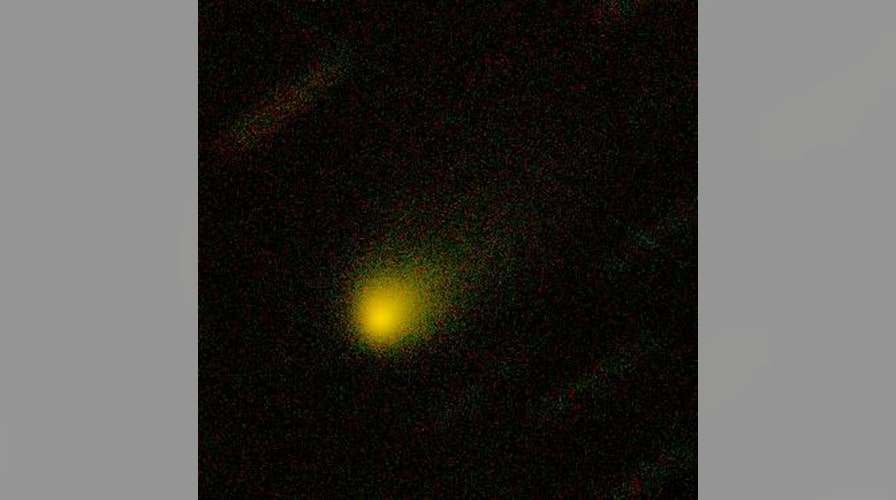Fox News Flash top headlines for Oct. 15
Fox News Flash top headlines for Oct. 15 are here. Check out what's clicking on Foxnews.com
Comet 2I/Borisov, the second-ever discovered interstellar object, has a familiar look to it, similar to the other comets that are common throughout our solar system, according to a new study. This discovery makes the first interstellar object, Oumuamua, all the more mysterious.
The study, published in Nature Astronomy, confirms that 2I/Borisov is interstellar and has a "cometary appearance," according to images taken on Sept. 10 and Sept. 13.
"Images taken on 10 and 13 September 2019 UT with the William Herschel Telescope and Gemini North Telescope show an extended coma and a faint, broad tail," the study's authors wrote in the abstract, adding that 2I/Borisov has a "slightly reddish color," which they describe as "compatible with Solar System comets."

Two-color composite image of comet 2I/Borisov captured by the Gemini North telescope on 10 September 2019. The image was obtained with eight 60-second exposures, four in green and four in red bands. (Credit: Gemini Observatory/NSF/AURA)
MYSTERIOUS, SECOND INTERSTELLAR OBJECT EVER SPOTTED IS CONFIRMED
The interstellar object is comprised of dust, its morphology described as "unremarkable" and it likely has a diameter of about 2.4 miles (2 kilometers), similar to other comets in our solar system.
"Based on these early characteristics, and putting its hyperbolic orbit aside, 2I/Borisov appears indistinguishable from the native Solar System comets," the abstract adds.
"We immediately noticed the familiar coma and tail that were not seen around 'Oumuamua," said the study's co-author, Michal Drahus, in a statement. "This is really cool because it means that our new visitor is one of these mythical and never-before-seen 'real' interstellar comets."
Last month, NASA JPL said 2I/Borisov is approximately 260 million miles from the sun and will reach its closest point, known as perihelion, on Dec. 8, 2019, when it gets within 190 million miles of the sun.
The interstellar comet was discovered on Aug. 30 by astronomer Gennady Borisov. Unlike its predecessor, Ouamuamua, it will be observable for an extended period of time, an idea that has excited astronomers.

Artist's illustration of 'Oumuamua, the first known interstellar object spotted in our solar system. (M. Kornmesser/ESO)
MYSTERIOUS INTERSTELLAR OBJECT COULD BE 'LIGHTSAIL' FROM ANOTHER CIVILIZATION
"The comet is still emerging from the sun's morning glare and growing in brightness," said one of the study's co-authors, Waclaw Waniak, in the statement. "It will be observable for several months, which makes us believe that the best is yet to come."
Unlike 21/Borisov, the mystery around Oumuamua has only continued to deepen in recent months. The oblong, cigar-shaped object was first discovered in October 2017 but was no longer observable by telescopes as of January 2018.
Many have speculated what the object is, with some theorizing it may have been a light sail sent from an intelligent extraterrestrial civilization, a comet or an asteroid.
The mystery about its exact nature deepened late last year when NASA said it was looking at the object for two months and did not originally see it.

